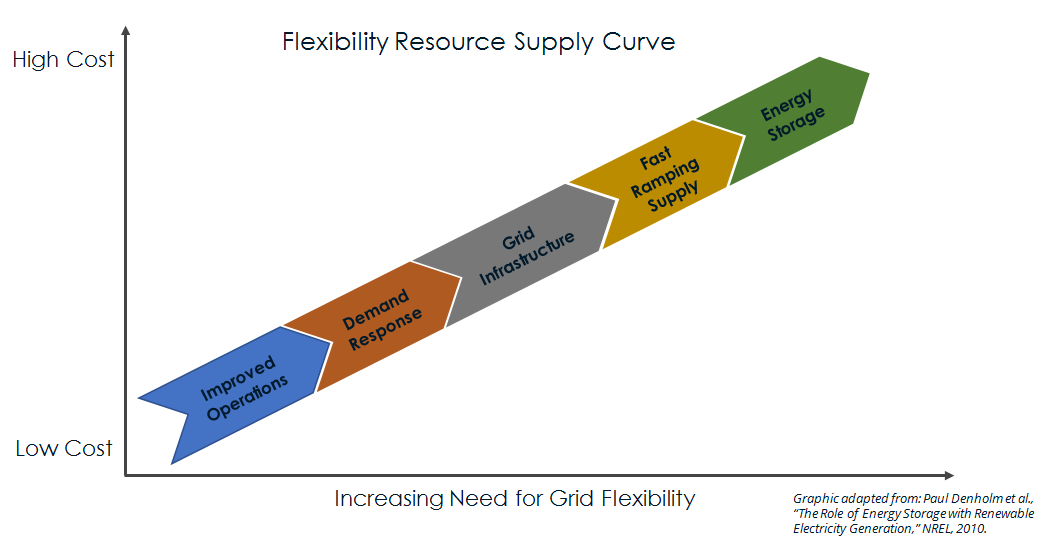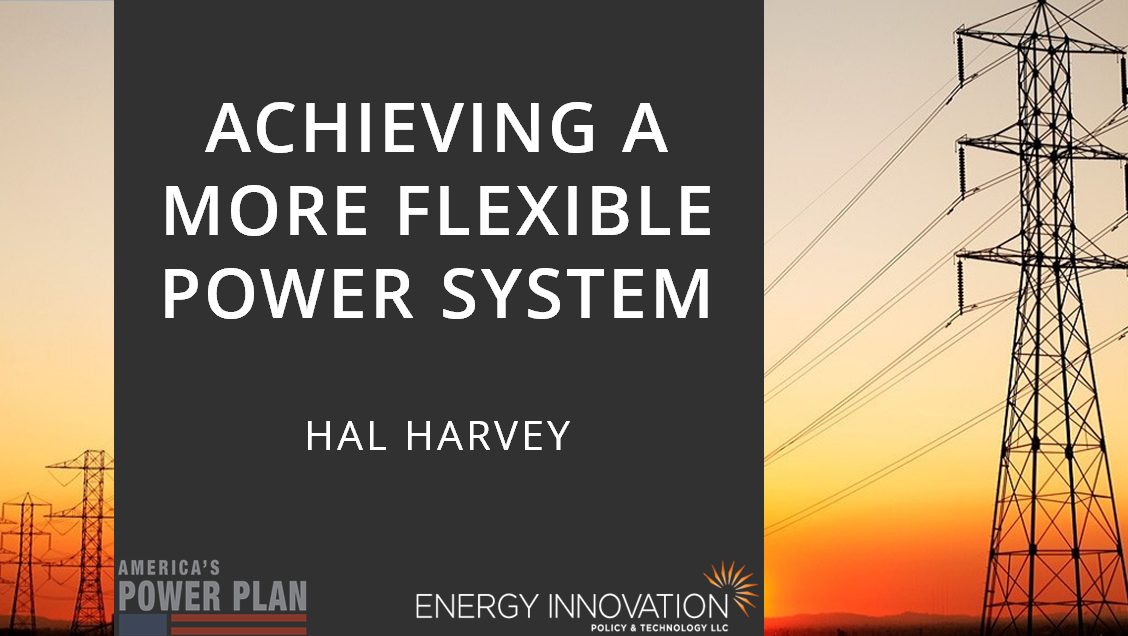By Hal Harvey

Many argue that the Achilles Heel of renewable energy is variability. The sun can be blocked by clouds and, though it sets and rises quite reliably, this pattern naturally renders solar power moot at night. Likewise, some days are windy, while others are not. But we need electricity when we need it: No modern economy can run without certainty that the light switch will turn on the lights. So, as ever more renewable energy enters the power system, utilities and their overseers must explore options for maintaining a grid that not only puts up with variability, but actually optimizes with it.
In late April, I had a chance to present a strategy for handling variability to the heads of all of the relevant California regulators—the Public Utilities Commission, the California Energy Commission, the Independent System Operator, and the Department of Natural Resources. The work covered research from our power sector transformation group, America’s Power Plan, led by Sonia Aggarwal and supported by work from dozens of utility researchers, regulators, and operators. The goal of the talk was to lay out best practices to make the grid more flexible as renewables come to comprise a larger portion of the state’s energy supply.
There are five options to build in the flexibility the grid requires to accommodate large fractions of renewable energy—and these will become requirement if California is to meet its mid-term and long-term emissions targets (40 percent reduction by 2030, 80 percent reduction by 2050, respectively). These options are described more thoroughly in Energy Innovation’s recent publication, “Grid Flexibility: Methods for Modernizing the Power Grid.”
The chart below, adapted from Paul Denholm et al.’s “The Role of Energy Storage with Renewable Electricity Generation,” shows that, as the grid reaches higher penetrations of renewable energy—requiring greater flexibility in its system—utilities will need to explore a broad suite of options. We argue that they should use the cheapest options first. Contrary to what many believe, fast-ramping gas plants and energy storage are not our only options for integrating high levels of renewables; in fact they are generally the most expensive options.

- Improved operations – modify how resources are dispatched and shared across regions
Dispatching power on sub-hourly intervals better mirrors the availability of variable renewables, and thus helps match demand more closely. Weather forecasting has also improved the predictability of the presence and strength of solar and wind power, helping grid operators make decisions ahead of time. And regulators can improve grid operations by improving regional coordination. Specifically, the Energy Imbalance Market that currently spans seven Western states should be expanded to take advantage of resources in other regions. All these options are essentially free, and their impact can be quite consequential.
- Demand response – target customer energy use to reduce peak demand
Demand response (DR) covers a variety of techniques to reduce energy demand when supply is low, and shift it to times when supply is high. This grid flexibility option allows utilities to compare supply and demand side-by-side, and decide which option is cheaper to dispatch at any particular time and location. Demand-response comes in two flavors: Market-driven adjustments driven by time-of-use rates, and technical responses contracted for in DR bids. To illustrate: On a hot, windless day, it will be wise to modestly pre-cool office buildings, so as to shift load to the early morning when demand is low, rather than the peaky mid-afternoon. The demand response resource is likely very large and very cheap, and should almost always be cheaper than turning on more fossil fuel-powered plants.
- Grid infrastructure – add transmission to take advantage of geographic and technological diversity
Increasing integration is an important way to increase system resilience and manage the variability of renewables. Additional transmission gives customers access to more diverse energy resources, allowing for more cost-effective balancing between varied supplies and demand. Connecting negatively correlated resources (like wind and solar), and across more diverse geographies (like California and Wyoming) can help smooth load variations and reduce the cost of balancing supply. My presentation recommends California consider adding regional transmission lines to connect to out-of-state wind that blows when California air is stagnant. Transmission can be cumbersome to build, from a financial and regulatory standpoint. For that reason, grid operators ought to add renewable resources in locations where coal is currently retiring, taking advantage of its existing transmission infrastructure.
- Fast-ramping supply – natural gas ought to be used mainly for power, not energy
Combined cycle natural gas turbines are indeed a proven source of flexibility for the grid. However, other forms of fast-reacting stored energy, like hydroelectric power, exist as well and are often the economically and environmentally preferred option. California will not be able to meet its long-term emissions goals cost-effectively if more natural gas generation is added to the system: its only role in the future ought to be for balancing renewable generation, not for supplying large volumes of energy to the system. Gas can switch on and off quickly, adding flexibility to the system, but should run for relatively few hours per year, which reduces carbon emissions a great deal.
- Battery storage – deployment mandates have reduced costs, but batteries are still an expensive option
Under a very high renewables penetration scenario, energy storage may be able to provide flexibility better than other options. However, while cost of storage technologies like batteries have fallen drastically in recent years (14 percent annually since 2007), they still remain costlier than the other options mentioned above. California is doing its part to develop this exciting technology by mandating 1.3 gigawatts of storage capacity be online by 2020. But we are still several years out from battery storage becoming a low-cost option for balancing renewable energy.
For more information on opportunities to achieve grid flexibility, check out our presentation to California’s power regulators below:
This topic also received thorough coverage from Herman Trabish at Utility Dive.

